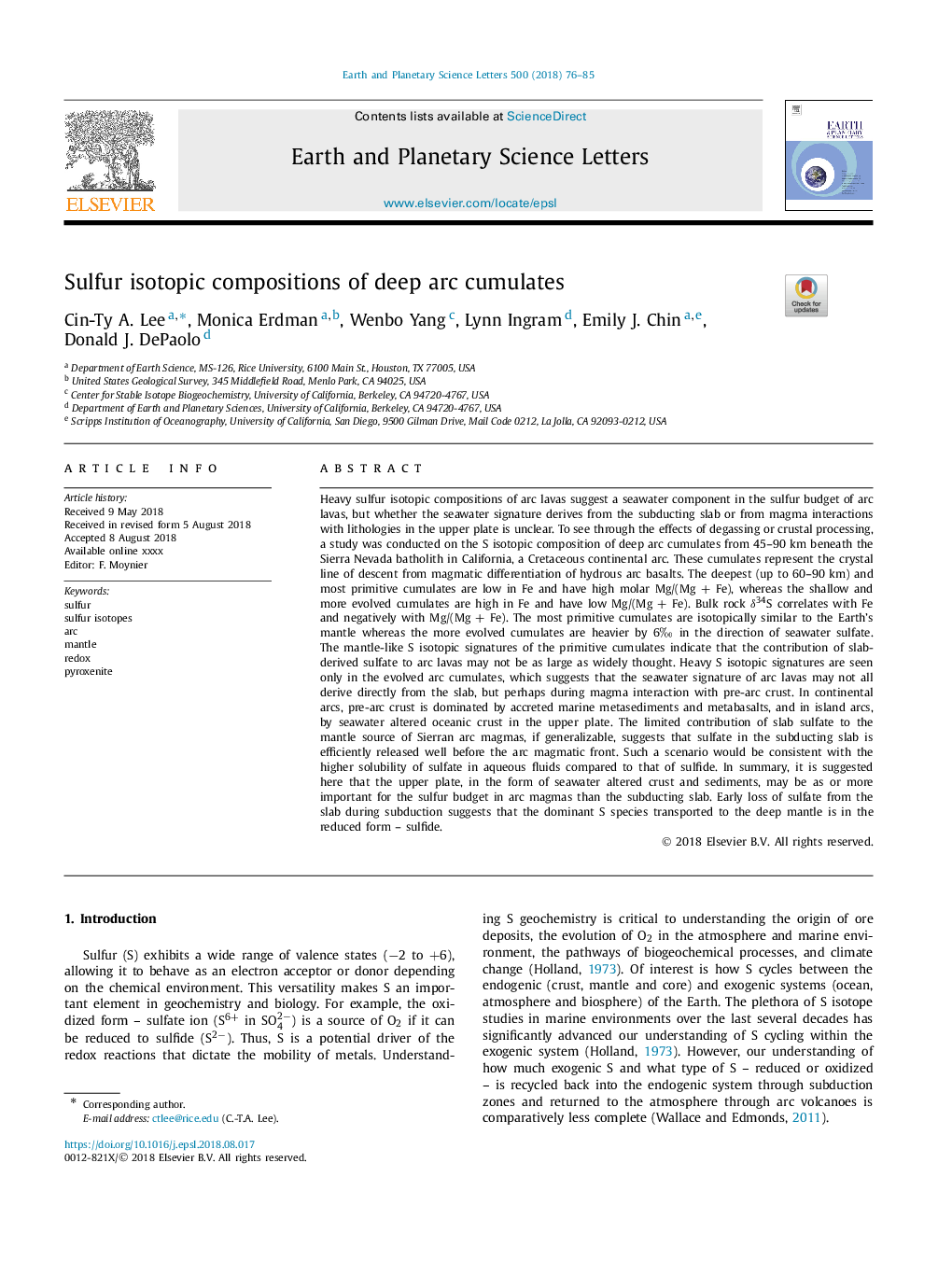| کد مقاله | کد نشریه | سال انتشار | مقاله انگلیسی | نسخه تمام متن |
|---|---|---|---|---|
| 8906656 | 1634656 | 2018 | 10 صفحه PDF | دانلود رایگان |
عنوان انگلیسی مقاله ISI
Sulfur isotopic compositions of deep arc cumulates
ترجمه فارسی عنوان
ترکیبات ایزوتوپی گوگرد از قوس عمیق تجمع می یابد
دانلود مقاله + سفارش ترجمه
دانلود مقاله ISI انگلیسی
رایگان برای ایرانیان
کلمات کلیدی
گوگرد، ایزوتوپهای گوگرد قوس گوشته بازخورد پیروکسنیت،
موضوعات مرتبط
مهندسی و علوم پایه
علوم زمین و سیارات
علوم زمین و سیاره ای (عمومی)
چکیده انگلیسی
Heavy sulfur isotopic compositions of arc lavas suggest a seawater component in the sulfur budget of arc lavas, but whether the seawater signature derives from the subducting slab or from magma interactions with lithologies in the upper plate is unclear. To see through the effects of degassing or crustal processing, a study was conducted on the S isotopic composition of deep arc cumulates from 45-90 km beneath the Sierra Nevada batholith in California, a Cretaceous continental arc. These cumulates represent the crystal line of descent from magmatic differentiation of hydrous arc basalts. The deepest (up to 60-90 km) and most primitive cumulates are low in Fe and have high molar Mg/(Mg + Fe), whereas the shallow and more evolved cumulates are high in Fe and have low Mg/(Mg + Fe). Bulk rock δ34S correlates with Fe and negatively with Mg/(Mg + Fe). The most primitive cumulates are isotopically similar to the Earth's mantle whereas the more evolved cumulates are heavier by 6Ⱐin the direction of seawater sulfate. The mantle-like S isotopic signatures of the primitive cumulates indicate that the contribution of slab-derived sulfate to arc lavas may not be as large as widely thought. Heavy S isotopic signatures are seen only in the evolved arc cumulates, which suggests that the seawater signature of arc lavas may not all derive directly from the slab, but perhaps during magma interaction with pre-arc crust. In continental arcs, pre-arc crust is dominated by accreted marine metasediments and metabasalts, and in island arcs, by seawater altered oceanic crust in the upper plate. The limited contribution of slab sulfate to the mantle source of Sierran arc magmas, if generalizable, suggests that sulfate in the subducting slab is efficiently released well before the arc magmatic front. Such a scenario would be consistent with the higher solubility of sulfate in aqueous fluids compared to that of sulfide. In summary, it is suggested here that the upper plate, in the form of seawater altered crust and sediments, may be as or more important for the sulfur budget in arc magmas than the subducting slab. Early loss of sulfate from the slab during subduction suggests that the dominant S species transported to the deep mantle is in the reduced form - sulfide.
ناشر
Database: Elsevier - ScienceDirect (ساینس دایرکت)
Journal: Earth and Planetary Science Letters - Volume 500, 15 October 2018, Pages 76-85
Journal: Earth and Planetary Science Letters - Volume 500, 15 October 2018, Pages 76-85
نویسندگان
Cin-Ty A. Lee, Monica Erdman, Wenbo Yang, Lynn Ingram, Emily J. Chin, Donald J. DePaolo,
